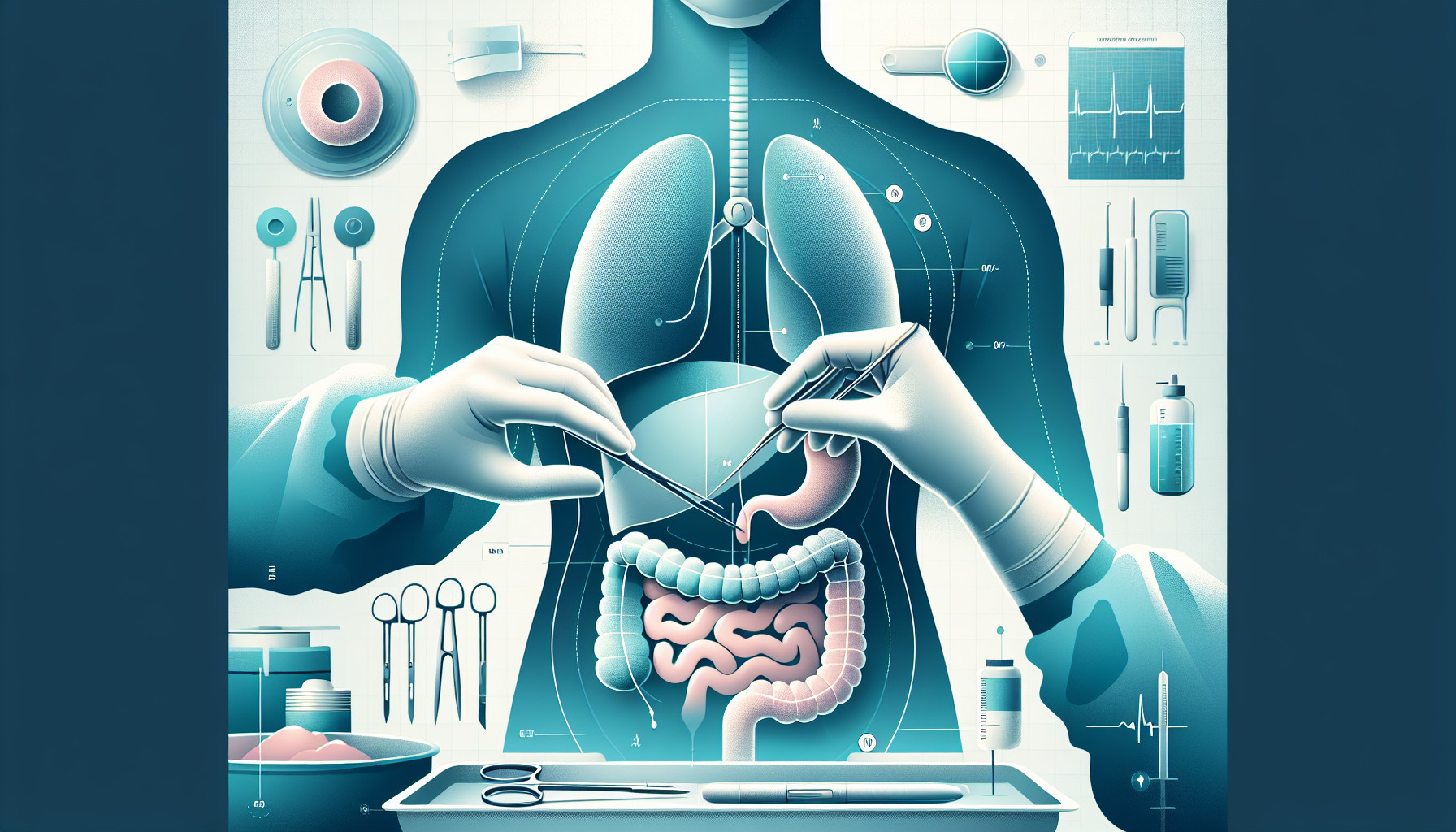Our Summary
This research paper is about a study that looked at the effects of different techniques used to fix a type of hernia (hiatal hernia) during a specific weight loss surgery (laparoscopic sleeve gastrectomy). The study found that one method, where the hernia is fixed from the front (anterior repair), led to an increase in heartburn-like symptoms a year after the operation, even though the patients had lost a significant amount of weight. This result was compared to two other methods where the hernia is fixed from the back, one with a mesh and the other without it. The study concludes that fixing the hernia from the back (posterior repair) is recommended, as it could reduce the heartburn-like symptoms. However, the research also noted that the control of these symptoms could be influenced by multiple factors.
FAQs
- What is the main finding of the research study on hiatal hernia repair techniques?
- Why is the posterior repair technique for hiatal hernia recommended over the anterior repair method?
- Does the research suggest that the reduction of heartburn-like symptoms post-surgery is solely due to the posterior repair technique?
Doctor’s Tip
A helpful tip a doctor might give a patient about hiatal hernia repair is to discuss with their surgeon the different techniques available for fixing the hernia, such as anterior repair versus posterior repair with or without a mesh. It is important for the patient to understand the potential risks and benefits of each method in order to make an informed decision about their treatment. Additionally, the doctor may recommend certain lifestyle changes, such as maintaining a healthy weight and avoiding trigger foods, to help manage symptoms after surgery. Regular follow-up appointments with the surgeon are also important to monitor the success of the repair and address any concerns or complications that may arise.
Suitable For
Patients who are typically recommended hiatal hernia repair are those who are undergoing weight loss surgery, specifically laparoscopic sleeve gastrectomy, and have a hiatal hernia that needs to be addressed during the procedure. These patients may be experiencing symptoms such as heartburn, acid reflux, chest pain, difficulty swallowing, or regurgitation, which can be indicative of a hiatal hernia. Additionally, patients with a hiatal hernia that is causing complications such as obstruction or strangulation of the stomach may also be recommended for repair.
In the study mentioned above, patients who underwent laparoscopic sleeve gastrectomy and had a hiatal hernia repaired using different techniques were evaluated for the presence of heartburn-like symptoms postoperatively. The study found that patients who underwent anterior repair of the hiatal hernia experienced an increase in heartburn-like symptoms compared to those who underwent posterior repair with or without mesh. This suggests that patients with hiatal hernias may benefit from posterior repair techniques to reduce the risk of postoperative heartburn.
Ultimately, the decision to recommend hiatal hernia repair will depend on the individual patient’s symptoms, the size and severity of the hernia, and the type of surgery being performed. Patients who are experiencing symptoms related to their hiatal hernia and are undergoing surgery for weight loss or other reasons may be candidates for repair to improve their overall quality of life and reduce the risk of complications.
Timeline
Before hiatal hernia repair:
- Symptoms of hiatal hernia such as heartburn, chest pain, difficulty swallowing, and regurgitation may be present.
- Diagnosis of hiatal hernia through imaging tests such as a barium swallow, endoscopy, or pH monitoring.
- Consultation with a surgeon to discuss treatment options for hiatal hernia repair.
- Pre-operative preparation including fasting, medication adjustments, and lifestyle changes.
After hiatal hernia repair:
- Immediate recovery period in the hospital with monitoring for any complications.
- Post-operative pain management and instructions for wound care.
- Gradual return to normal activities and diet under the guidance of healthcare providers.
- Follow-up appointments to monitor healing progress and address any concerns.
- Resolution of hiatal hernia symptoms such as heartburn and regurgitation over time.
- Long-term management of underlying conditions that may have contributed to the development of the hiatal hernia, such as obesity or GERD.
What to Ask Your Doctor
- What is a hiatal hernia and how does it affect my health?
- What are the different techniques used to repair a hiatal hernia during weight loss surgery?
- What are the potential risks and benefits of each repair technique?
- How will each repair technique affect my recovery time and post-operative symptoms?
- Will fixing the hernia from the front (anterior repair) increase my risk of heartburn-like symptoms?
- Are there any long-term complications associated with each repair technique?
- How successful is each repair technique in preventing the recurrence of the hiatal hernia?
- How will the choice of repair technique impact my overall weight loss outcome?
- Are there any lifestyle changes or dietary restrictions I should follow after undergoing hiatal hernia repair?
- Are there any alternative treatment options available for my hiatal hernia?
Reference
Authors: Ehlers AP, Bonham AJ, Ghaferi AA, Finks JF, Carlin AM, Varban OA. Journal: Surg Endosc. 2022 Sep;36(9):6815-6821. doi: 10.1007/s00464-021-08970-5. Epub 2022 Jul 19. PMID: 35854122
